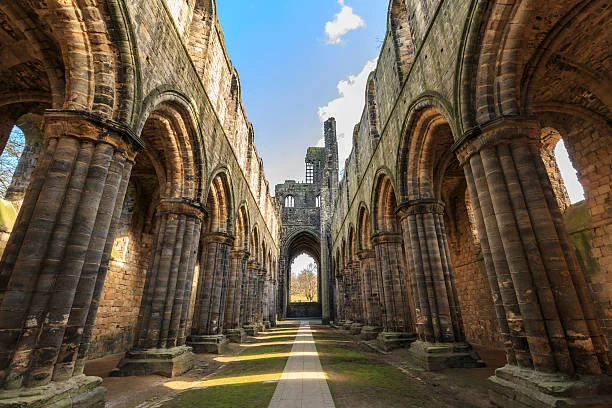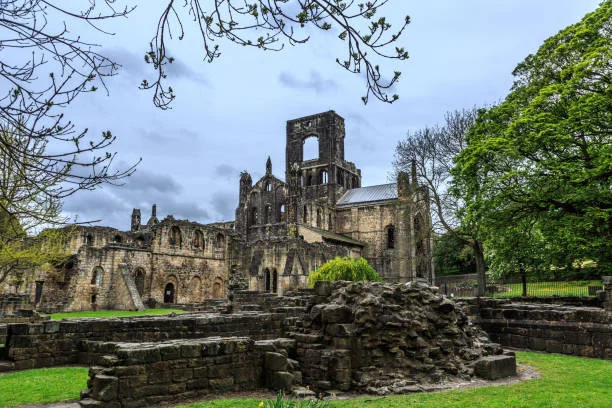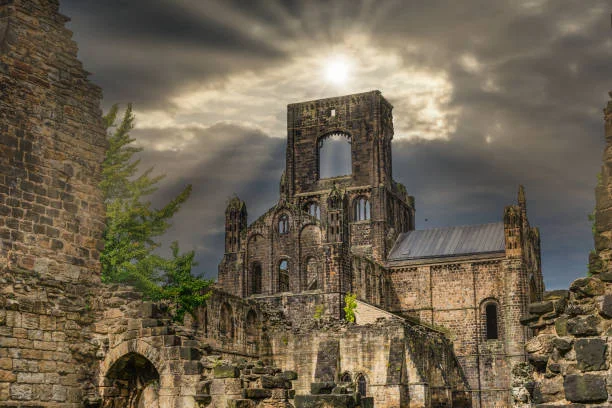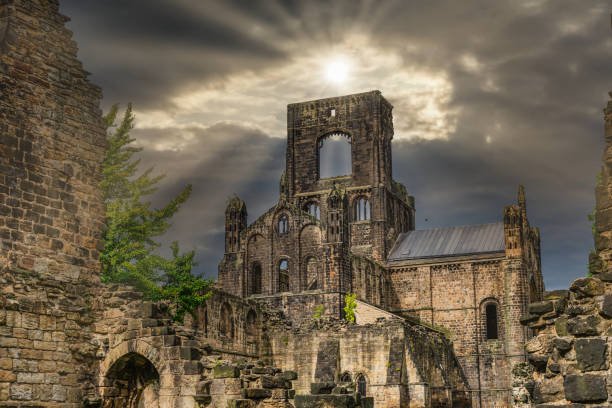Kirkstall Abbey Leeds
**Kirkstall Abbey Leeds: A Timeless Treasure and the Best Place to Visit in the UK**
When exploring the rich tapestry of historical and cultural landmarks in the UK, few places captivate the imagination quite like Kirkstall Abbey Leeds. Nestled in the charming city of Leeds, this medieval marvel is not just a relic of the past but a vibrant reminder of the UK’s storied history. For those seeking an authentic slice of history, Kirkstall Abbey Leeds stands out as the best place to visit in the UK.
**A Historical Gem in the Heart of Leeds**
Kirkstall Abbey Leeds is a prime example of Gothic architecture and medieval grandeur. Established in 1152, the abbey was once a thriving Cistercian monastery that played a crucial role in the religious and economic life of medieval England. Its serene location by the River Aire, surrounded by lush greenery, enhances its allure and makes it a must-visit destination for history enthusiasts and casual tourists alike.
The abbey’s architecture reflects the sophistication of its era. The remains of the abbey include a well-preserved church, cloisters, and chapter house, which together offer a window into monastic life during the 12th century. Walking through the ruins of Kirkstall Abbey Leeds is like stepping back in time, with the majestic arches and tranquil setting transporting visitors to an era of devotion and craftsmanship.
**Why Kirkstall Abbey Leeds is the Best Place to Visit in the UK**
1. **Unparalleled Historical Significance**: Kirkstall Abbey Leeds is not just an architectural wonder but a significant historical site. The abbey was founded by a group of Cistercian monks from Fountains Abbey, and its development reflects the evolution of monastic life in medieval England. The abbey was operational until the Dissolution of the Monasteries in the 16th century, an event that dramatically reshaped England’s religious landscape. Visiting Kirkstall Abbey Leeds offers a tangible connection to this pivotal period in British history.
2. **Stunning Architecture and Preservation**: One of the most compelling reasons Kirkstall Abbey Leeds is considered the best place to visit in the UK is its architectural splendor. The abbey’s gothic ruins, with their intricate stonework and grand arches, provide a striking contrast to the modern cityscape of Leeds. The preservation of the site allows visitors to appreciate the detailed craftsmanship and architectural innovation of the medieval period.
3. **Scenic Beauty and Tranquility**: Set against the backdrop of the River Aire, Kirkstall Abbey Leeds offers a serene escape from the hustle and bustle of urban life. The surrounding parkland enhances the beauty of the abbey and provides a peaceful setting for reflection and exploration. Whether you’re strolling through the grounds or enjoying a picnic by the river, the natural beauty of Kirkstall Abbey Leeds is a key reason why it is the best place to visit in the UK.
4. **Educational Opportunities**: For those interested in learning more about medieval history, Kirkstall Abbey Leeds is a treasure trove of information. The site offers various educational resources, including informative plaques and guides that delve into the abbey’s history and significance. Visitors can gain insights into the daily lives of the monks, the abbey’s architectural evolution, and the broader historical context of the era.
5. **Cultural Events and Activities**: Kirkstall Abbey Leeds is more than just a historical site; it’s a vibrant cultural hub. Throughout the year, the abbey hosts a variety of events, including medieval reenactments, educational workshops, and seasonal festivals. These activities provide visitors with an immersive experience, making Kirkstall Abbey Leeds not only a place of historical interest but also a center of cultural engagement.
6. **Accessibility and Amenities**: Located just a short distance from Leeds city center, Kirkstall Abbey Leeds is easily accessible by public transport and car. The site is well-equipped with amenities, including visitor centers, cafes, and gift shops. This accessibility, combined with the amenities available, makes Kirkstall Abbey Leeds a convenient and enjoyable destination for visitors of all ages.
7. **Family-Friendly Atmosphere**: Kirkstall Abbey Leeds is an ideal destination for families. The expansive grounds offer plenty of space for children to explore, and the site’s historical and educational aspects can spark curiosity and learning. The family-friendly atmosphere is enhanced by interactive exhibits and activities that cater to younger visitors, making it a memorable experience for the whole family.
8. **Photographic Opportunities**: For photography enthusiasts, Kirkstall Abbey Leeds presents a wealth of opportunities. The contrast between the ancient stone ruins and the surrounding natural beauty creates stunning photographic compositions. Whether capturing the intricate details of the abbey’s architecture or the picturesque landscape, visitors will find Kirkstall Abbey Leeds to be a photographer’s paradise.
9. **Connection to Local Heritage**: Kirkstall Abbey Leeds holds a special place in the local heritage of Leeds. The abbey’s history is intertwined with the development of the city, and visiting the site offers a deeper understanding of Leeds’ historical roots. This connection to local heritage makes Kirkstall Abbey Leeds an essential destination for those interested in exploring the broader historical narrative of the region.
10. **Peaceful Retreat**: In addition to its historical and cultural significance, Kirkstall Abbey Leeds provides a peaceful retreat from the demands of modern life. The calm and tranquil setting invites visitors to pause and reflect, offering a respite from the fast-paced nature of contemporary living. This sense of peace is a major reason why Kirkstall Abbey Leeds is celebrated as the best place to visit in the UK.
**Exploring Kirkstall Abbey Leeds: What to Expect**
A visit to Kirkstall Abbey Leeds begins with a walk through the impressive gatehouse, which serves as the entrance to the site. From there, visitors can explore the various sections of the abbey, including the church, cloisters, and chapter house. Each area offers a unique glimpse into the abbey’s past and the lives of the monks who once called it home.
The church, with its grand arches and intricate stonework, is a highlight of the abbey. Visitors can marvel at the remnants of the high altar and the beautifully crafted windows that once adorned the church. The cloisters, a serene and atmospheric space, provide a glimpse into the daily lives of the monks and their contemplative routines.
The chapter house, with its impressive vaulted ceiling, was once the center of administrative and communal activities within the abbey. Today, it serves as a venue for exhibitions and events, further enhancing the cultural experience of visiting Kirkstall Abbey Leeds.
**Planning Your Visit**
For those planning a visit to Kirkstall Abbey Leeds, there are a few practical considerations to keep in mind. The site is open to visitors throughout the year, with varying hours depending on the season. It’s advisable to check the official website for the latest information on opening hours and any special events or closures.
The abbey is easily accessible by public transport, with regular bus and train services connecting Leeds city center to the site. For those traveling by car, there is ample parking available nearby. The site is also wheelchair accessible, ensuring that all visitors can enjoy the historical and cultural experience that Kirkstall Abbey Leeds has to offer.
**Kirkstall Abbey Leeds: A Journey Through Time and Space**
Continuing our exploration of Kirkstall Abbey Leeds, it’s essential to delve deeper into its fascinating history, the experiences it offers to visitors, and the broader significance of this remarkable site. Kirkstall Abbey Leeds is not just a place to visit; it’s a journey through time that immerses you in the medieval era, providing a unique perspective on England’s rich historical heritage.
**The Foundation and Early Years**
Kirkstall Abbey Leeds was founded in 1152 by a group of Cistercian monks from Fountains Abbey, a testament to the spiritual zeal and architectural ambition of the Cistercian order. The Cistercians were known for their dedication to simplicity and their focus on agricultural self-sufficiency, which played a significant role in shaping the landscape of medieval England.
The abbey was established in a picturesque location near the River Aire, chosen for its natural resources and isolation from the bustle of urban centers. This location allowed the monks to cultivate the land and engage in various forms of labor, aligning with their commitment to a life of manual work and self-reliance. The early years of Kirkstall Abbey Leeds were marked by rapid growth and development, as the monks expanded their influence and established a thriving monastic community.
**Architectural Brilliance and Innovation**
One of the most striking aspects of Kirkstall Abbey Leeds is its architectural design. The abbey is a prime example of Gothic architecture, characterized by its pointed arches, ribbed vaults, and flying buttresses. The design reflects the grandeur and ambition of the Cistercian order, combining both functionality and beauty.
The layout of Kirkstall Abbey Leeds follows the typical Cistercian plan, which includes a church, cloisters, chapter house, and various service buildings. The church, once a magnificent structure, was designed to accommodate the monks’ daily prayers and ceremonies. Its remnants, including the impressive nave and transept, still convey a sense of the grandeur that once defined the abbey’s religious life.
The cloisters at Kirkstall Abbey Leeds are particularly notable for their serene and contemplative atmosphere. These covered walkways, surrounded by a quadrangle of lush green gardens, provided a space for meditation and reflection. The architectural design of the cloisters reflects the Cistercian commitment to simplicity and order, creating a tranquil environment that allowed the monks to focus on their spiritual practices.
The chapter house, another key feature of Kirkstall Abbey Leeds, was the center of administrative and communal activities within the abbey. Its vaulted ceiling and intricately designed arches exemplify the architectural sophistication of the time. Today, the chapter house serves as a venue for exhibitions and events, further enriching the cultural experience of visitors.
**The Dissolution and Legacy**
The Dissolution of the Monasteries, enacted by King Henry VIII in the 1530s, marked a dramatic turning point in the history of Kirkstall Abbey Leeds. As part of a broader campaign to consolidate power and control over religious institutions, Henry VIII ordered the dissolution of monasteries across England. This event led to the closure of Kirkstall Abbey Leeds and the dispersal of its lands and assets.
The dissolution had a profound impact on the abbey, leading to the destruction of many of its buildings and the loss of its monastic traditions. However, the legacy of Kirkstall Abbey Leeds endured. Despite the ravages of time and the dissolution, the abbey’s ruins continued to inspire awe and admiration. The site remained a point of interest for antiquarians and historians, who recognized its historical and architectural significance.
In the 19th century, the abbey became a focal point for the preservation movement. Efforts to protect and maintain the site led to the establishment of Kirkstall Abbey Leeds as a public attraction. Today, the abbey is managed by Leeds City Council, which works to ensure its preservation and accessibility for future generations.
**A Rich Tapestry of Experiences**
Visiting Kirkstall Abbey Leeds is more than just a historical excursion; it’s an immersive experience that offers a range of activities and insights. The abbey’s expansive grounds provide ample opportunities for exploration and relaxation. Whether you’re interested in wandering through the ruins, enjoying a leisurely stroll along the river, or participating in one of the many events held on site, Kirkstall Abbey Leeds has something to offer every visitor.
**Interactive Exhibits and Educational Programs**
One of the highlights of a visit to Kirkstall Abbey Leeds is the opportunity to engage with interactive exhibits and educational programs. These resources are designed to enhance the visitor experience by providing deeper insights into the abbey’s history, architecture, and daily life.
The abbey’s visitor center features a range of exhibits that delve into various aspects of monastic life. These displays include artifacts, models, and interactive installations that help to bring the history of Kirkstall Abbey Leeds to life. Visitors can learn about the daily routines of the monks, the architectural features of the abbey, and the broader historical context in which the abbey existed.
Educational programs and workshops are also available for schools and groups. These programs are tailored to different age groups and educational levels, offering hands-on activities and guided tours that make learning about history engaging and accessible. Whether you’re a student, a teacher, or a history enthusiast, these programs provide a valuable opportunity to explore the significance of Kirkstall Abbey Leeds in a dynamic and interactive way.
**Seasonal Events and Activities**
Throughout the year, Kirkstall Abbey Leeds hosts a variety of seasonal events and activities that add an extra dimension to the visitor experience. These events celebrate different aspects of the abbey’s history and culture, providing a vibrant and engaging atmosphere for visitors.
Medieval reenactments are a popular feature of the abbey’s events calendar. These reenactments bring the history of Kirkstall Abbey Leeds to life, with costumed actors portraying monks, craftsmen, and other historical figures. Visitors can witness demonstrations of medieval crafts, participate in interactive workshops, and experience the sights and sounds of a bygone era.
Seasonal festivals and fairs are also held at Kirkstall Abbey Leeds, offering a festive atmosphere and a range of activities for all ages. These events often include live music, food stalls, craft displays, and family-friendly entertainment. The combination of historical setting and modern festivities creates a unique and enjoyable experience for visitors.
**Community and Cultural Impact**
Kirkstall Abbey Leeds plays a significant role in the local community and cultural landscape. As one of Leeds’ most iconic landmarks, the abbey is a source of pride and a focal point for cultural and community activities.
The abbey’s presence enhances the cultural richness of Leeds, providing a historical backdrop for various community events and celebrations. Its role in the local heritage is recognized and celebrated through partnerships with local schools, historical societies, and community groups. These collaborations help to promote a deeper understanding of the abbey’s history and its significance to the region.
In addition to its cultural impact, Kirkstall Abbey Leeds contributes to the local economy by attracting visitors and tourism. The site’s popularity as a visitor destination supports local businesses and services, from cafes and restaurants to accommodation providers. This economic impact is a testament to the abbey’s importance as a cultural and historical asset.
**Preservation and Future Prospects**
The preservation of Kirkstall Abbey Leeds is a key priority for Leeds City Council and various heritage organizations. Efforts are continuously made to protect and maintain the site, ensuring that it remains a valuable resource for future generations.
Conservation work at the abbey involves regular maintenance and restoration projects to address the effects of weathering and natural wear. This work is carried out by skilled craftsmen and conservation experts who use traditional techniques and materials to preserve the site’s historical integrity.
Looking to the future, there are ongoing plans to enhance the visitor experience and further engage with the community. This includes developing new educational programs, expanding the range of events and activities, and improving facilities to ensure that Kirkstall Abbey Leeds continues to be a vibrant and accessible destination.
**The Enduring Legacy of Kirkstall Abbey Leeds**
As we reflect on the significance of Kirkstall Abbey Leeds, it becomes clear why it is celebrated as the best place to visit in the UK. Its historical importance, architectural beauty, and cultural impact make it a unique and treasured site.
The abbey’s story is one of resilience and adaptation, from its origins as a thriving monastic community to its role as a cherished historical landmark. Each visit to Kirkstall Abbey Leeds offers an opportunity to connect with this rich legacy and appreciate the enduring relevance of the site.
Whether you are drawn to its medieval architecture, its serene natural setting, or its vibrant cultural events, Kirkstall Abbey Leeds offers an experience that is both enriching and memorable. It stands as a testament to the enduring appeal of historical sites and the importance of preserving and celebrating our shared heritage.
In conclusion, Kirkstall Abbey Leeds is more than just a historical site; it is a gateway to the past and a source of inspiration for the future. Its combination of historical significance, architectural splendor, and cultural engagement ensures that it remains the best place to visit in the UK. For anyone seeking to explore the depths of England’s rich history and heritage, a visit to Kirkstall Abbey Leeds is a journey worth undertaking.
Kirkstall Abbey Leeds stands as a testament to the rich history and architectural brilliance of medieval England. Its combination of historical significance, stunning architecture, scenic beauty, and cultural activities make it the best place to visit in the UK. Whether you’re a history buff, a casual tourist, or someone seeking a peaceful retreat, Kirkstall Abbey Leeds offers something for everyone. A visit to this remarkable site provides not only a journey through time but also an opportunity to connect with the enduring legacy of one of the UK’s most cherished historical landmarks.
Kirkstall Abbey Leeds Situated on the banks of the River Aire in Leeds, England, Kirkstall Abbey Leeds is a
remarkable example of medieval Cistercian architecture and the enduring essence of monastic life. Leeds’s beautiful ruins evoke a sense of timeless tranquility amidst the city’s hectic bustle.
Created in 1152 by Fountains Abbey monks, Kirkstall grew quickly as a centre
of inventive farming, pious enthusiasm, and intercultural exchange. The
Cistercian order established Kirkstall Abbey with the principles of self-
sufficiency, discipline, and simplicity in mind. The austere yet elegant style
typical of Cistercian monasteries is reflected in the abbey’s design, which
places usefulness over decoration.
The Kirkstall Abbey Leeds architecture is typical of the Cistercian style and Features a
cruciform church with a long nave, transepts, and a splendid chapter house.
The church nevertheless retains the grandeur of its original construction,
providing travelers with a glimpse of its Majesty in the past , although being
mostly in ruins now.
Regular meetings amongst the monks at the chapter
house, where they talked about matters of governance and spirituality,
demonstrate the order’s strong sense of community and Organizational
discipline.
Beyond just being valuable architecturally, Kirkstall Abbey Leeds was Essential to the
local economy and community. Through their involvement in business,
agriculture, and cattle rearing, the Monks transformed the surrounding area
into a prosperous and Productive region. Using the power of the River Aire to
grind grain and meet their own needs, they constructed mills along its course.
The abbey’s influence extended beyond its immediate environs, Contributing
to the economic growth of Leeds and the surrounding area.
In its History, Kirkstall Abbey Leeds has seen both affluent and challenging periods.
The Dissolution of the Monasteries in the 16th Century under Henry VIII was a
major turning point that drove religious houses all over England to disband.
Kirkstall Abbey was subsequently overtaken by nature as it degraded, and
surrounding construction projects used the stones from the quarry. The abbey
remained a powerful symbol of the Middle Ages’ religious life and architectural
prowess until its collapse.
The 19th century saw a resurgence of sorts for Kirkstall Abbey Leeds as interest in
Gothic architecture and historical preservation grew. Efforts were made to
stabilize the ruins and prevent further degradation in order to Maintain their
historical and cultural significance for future Generations.
The serene surroundings and evocative remains of the abbey grounds became a well-
liked hangout for writers, poets, and artists seeking inspiration.
Currently one of Yorkshire’s most beloved historical sites, Kirkstall Abbey
attracts visitors from all over the globe. Surrounded by lush, well kept lawns,
the remnants offer a Peaceful refuge from the hectic pace of modern life. The
abbey, which has been meticulously restored to allow visitors to view its
cloisters, Refectory, and other architectural treasures, is overseen by Leeds
City Council. To show-case its extensive cultural heritage, the abbey often
holds special events, educational Programs, and exhibitions.
For tourists, Kirkstall Abbey is a contemporary example of the continuing
power of human creativity, faith, and tenacity rather than merely a historical
remnant. It encourages reflection on the monks’ adoration of nature, their
commitment to spirituality, and their feeling of camaraderie. Whether they are
roaming around on its worn stones in the mist of dawn or attending a summer
symphony in its shaded monastery, Kirkstall Abbey enthralls and inspires
them at every step.
Major Points:
Kirkstall Abbey Leeds uk
Kirkstall Abbey Leeds music
Kirkstall Abbey Leeds concert
Kirkstall Abbey Leeds events
Kirkstall Abbey Leeds embrace
Kirkstall Abbey Leeds gigs
Kirkstall Abbey Leeds history
madness Kirkstall Abbey Leeds
Kirkstall Abbey cafe Leeds
Kirkstall Abbey park Leeds
There are Many More Highly Recommended Places to Visit in Leeds Uk




FAQs
What happened in kirkstall abbey leeds?
The 31 monks’ monastic existence came to an end in November 1540 when Henry VIII accepted the abbey as part of the monasteries’ destruction.

